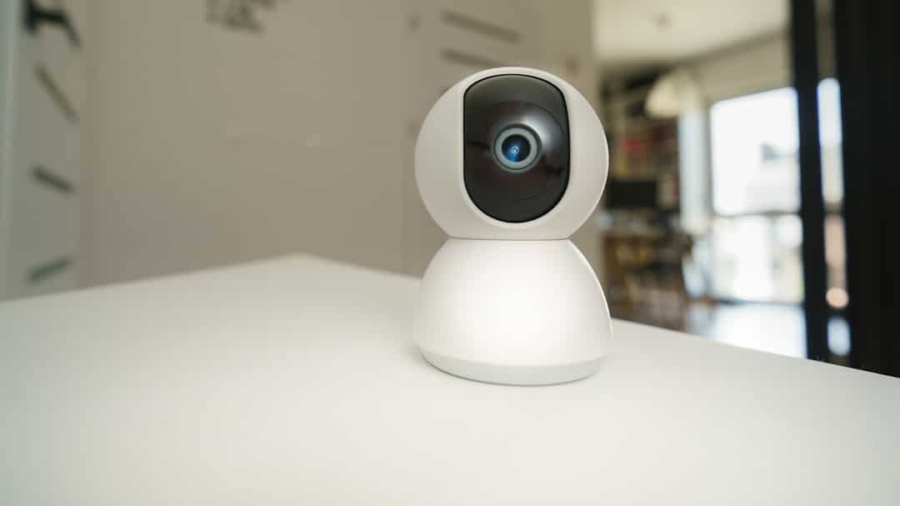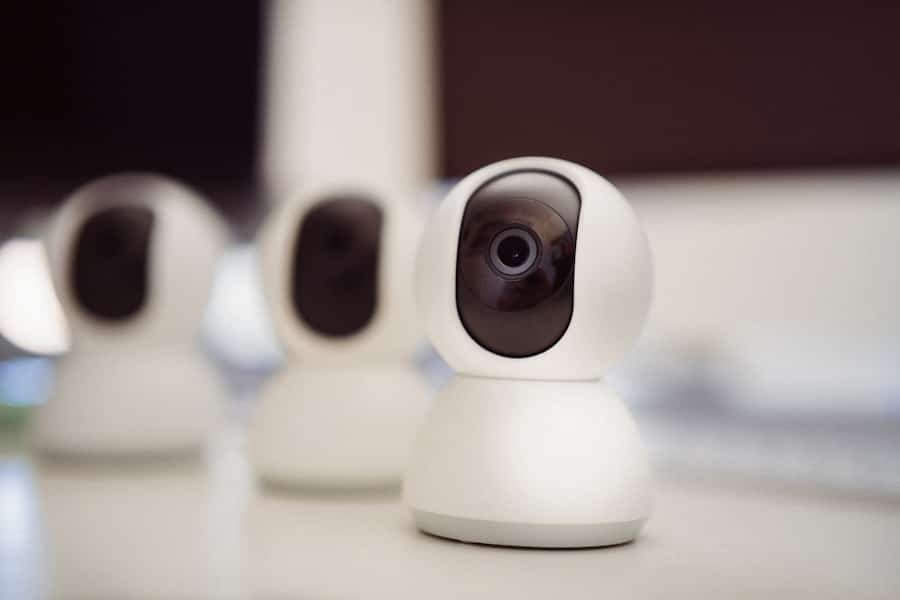In an era where technology permeates every aspect of our lives, the realm of home security has not been left untouched. The advent of artificial intelligence (AI) has revolutionized traditional security systems, transforming them into sophisticated, responsive entities capable of learning and adapting to their environments. AI-driven security systems leverage advanced algorithms and machine learning techniques to enhance the safety and security of homes, providing homeowners with unprecedented levels of protection and peace of mind.
These systems are not merely reactive; they are proactive, capable of identifying potential threats before they escalate into serious incidents. The integration of AI into security systems marks a significant shift from conventional methods that relied heavily on human monitoring and basic sensor technology. With the ability to analyze vast amounts of data in real-time, AI-driven systems can discern patterns, recognize faces, and even predict potential security breaches.
This evolution in home protection is not just about safeguarding physical assets; it encompasses a broader vision of creating smart, interconnected environments that prioritize safety while enhancing the overall quality of life for residents. As we delve deeper into the intricacies of AI-driven security systems, it becomes evident that they represent a pivotal advancement in the ongoing quest for enhanced home safety.
Key Takeaways
- AI-driven security systems use advanced technology to enhance home protection and safety.
- Artificial intelligence plays a crucial role in analyzing and responding to security threats in real-time.
- The advantages of AI-driven security systems include proactive threat detection, personalized alerts, and remote monitoring capabilities.
- These systems have features such as facial recognition, motion detection, and automated response to potential security breaches.
- Integration of AI-driven security systems with smart home technology allows for seamless control and monitoring of home security.
Understanding the Role of Artificial Intelligence in Home Protection
Artificial intelligence plays a multifaceted role in home protection, serving as the backbone of modern security systems. At its core, AI enables these systems to process and analyze data from various sources, including cameras, motion detectors, and environmental sensors. By employing machine learning algorithms, these systems can learn from historical data and adapt their responses based on evolving patterns of behavior.
For instance, an AI-driven security camera can differentiate between a family member returning home and an unfamiliar individual approaching the property, significantly reducing false alarms and enhancing the accuracy of threat detection. Moreover, AI enhances the functionality of home security systems through features such as facial recognition and anomaly detection. Facial recognition technology allows homeowners to receive alerts when unknown individuals are detected on their property, while anomaly detection can identify unusual activities that deviate from established patterns.
For example, if a door is opened at an unusual hour or if there is unexpected movement in a typically quiet area of the home, the system can alert the homeowner or law enforcement. This proactive approach not only improves response times but also empowers homeowners to take control of their security in ways that were previously unimaginable.
Advantages of AI-Driven Security Systems
The advantages of AI-driven security systems are manifold, making them an attractive option for homeowners seeking enhanced protection. One of the most significant benefits is the reduction in false alarms. Traditional security systems often rely on basic motion sensors that can be triggered by pets, passing vehicles, or even changes in weather conditions.
In contrast, AI-driven systems utilize advanced algorithms to analyze data more intelligently, significantly decreasing the likelihood of false alerts. This not only saves homeowners from unnecessary stress but also reduces the burden on local law enforcement agencies. Another notable advantage is the ability to provide real-time monitoring and alerts.
AI-driven security systems can continuously analyze video feeds and sensor data, allowing them to detect potential threats as they occur. Homeowners can receive instant notifications on their smartphones or other devices, enabling them to respond promptly to any suspicious activity. This immediacy is crucial in emergency situations where every second counts.
Furthermore, many AI-driven systems offer remote access capabilities, allowing homeowners to monitor their properties from anywhere in the world, providing an added layer of convenience and peace of mind.
Features and Capabilities of AI-Driven Security Systems
AI-driven security systems come equipped with a plethora of features designed to enhance home protection. One prominent feature is smart video surveillance, which utilizes high-definition cameras integrated with AI algorithms for real-time analysis.
In addition to video surveillance, many AI-driven systems incorporate smart alarms that can be customized based on user preferences. These alarms can be programmed to respond differently depending on the time of day or specific events.
For instance, a homeowner might set the system to activate a more sensitive mode during nighttime hours when they are asleep. Furthermore, some systems include environmental sensors that monitor for smoke, carbon monoxide, or water leaks, providing an all-encompassing approach to home safety that extends beyond traditional burglary prevention.
Integration of AI-Driven Security Systems with Smart Home Technology
The integration of AI-driven security systems with smart home technology represents a significant advancement in creating cohesive living environments. Many modern homes are equipped with various smart devices—such as smart locks, lights, and thermostats—that can communicate with one another through centralized platforms like Google Home or Amazon Alexa. This interconnectedness allows for seamless automation and enhanced security measures.
For example, when an AI-driven security system detects an intruder, it can automatically trigger smart lights to turn on throughout the house, creating the illusion that someone is home. Additionally, smart locks can be programmed to lock automatically when the system is armed or unlock when a recognized family member approaches. This level of integration not only enhances security but also contributes to energy efficiency and convenience by allowing homeowners to manage multiple aspects of their home environment from a single interface.
Potential Drawbacks and Limitations of AI-Driven Security Systems
Despite their numerous advantages, AI-driven security systems are not without potential drawbacks and limitations. One significant concern is privacy. The use of cameras equipped with facial recognition technology raises ethical questions about surveillance and data collection.
Homeowners must consider how their data is stored and used by service providers, as well as the implications of having constant monitoring within their private spaces. The potential for hacking or unauthorized access to these systems also poses a risk; if a cybercriminal gains control over a home’s security system, they could exploit it for malicious purposes. Another limitation lies in the reliance on technology itself.
While AI-driven systems are designed to be robust and reliable, they are still susceptible to technical failures or malfunctions. Power outages or internet disruptions can render these systems ineffective at critical moments. Additionally, while machine learning algorithms improve over time, they may still struggle with unique or unforeseen scenarios that fall outside their training data.
Homeowners must remain vigilant and not solely depend on technology for their safety; human oversight remains an essential component of effective home security.
Considerations for Choosing an AI-Driven Security System
When selecting an AI-driven security system, several factors warrant careful consideration to ensure that it meets individual needs and preferences. First and foremost is compatibility with existing smart home devices. Homeowners should assess whether the system can integrate seamlessly with their current technology ecosystem to maximize functionality and convenience.
Compatibility with platforms like Apple HomeKit or Google Assistant can enhance user experience by allowing centralized control over various devices. Another critical consideration is the level of customization offered by the system. Different households have unique security needs based on factors such as location, size of the property, and lifestyle habits.
A good AI-driven security system should allow users to tailor settings according to their specific requirements—whether it’s adjusting sensitivity levels for motion detection or setting up personalized alerts for different family members. Additionally, evaluating customer support options and warranty coverage is essential; reliable technical support can make a significant difference in resolving issues quickly should they arise.
Future Developments and Trends in AI-Driven Home Protection
The future of AI-driven home protection is poised for exciting developments as technology continues to evolve at a rapid pace. One emerging trend is the increased use of predictive analytics within security systems. By analyzing historical data and identifying patterns over time, these systems may soon be able to anticipate potential threats before they occur—allowing homeowners to take preventive measures proactively rather than reactively.
Moreover, advancements in natural language processing (NLP) could lead to more intuitive user interfaces for managing security systems. Homeowners may soon interact with their security devices using conversational language rather than navigating complex menus or apps. This shift towards more user-friendly interfaces will likely enhance accessibility for individuals who may not be tech-savvy.
Additionally, as concerns about privacy continue to grow, there will likely be a push for more transparent data practices within AI-driven security solutions. Companies may need to adopt stricter protocols regarding data collection and storage while providing users with greater control over their information. As these trends unfold, it will be fascinating to observe how they shape the landscape of home protection in the coming years—ultimately leading to smarter, safer living environments for all homeowners.
If you are interested in enhancing your home security with the latest technology, you may also want to check out this article on staying stylish with Wear OS by Google. Wearable technology can offer additional layers of security and convenience for homeowners looking to protect their property. By combining AI-driven security systems with wearable devices, you can create a comprehensive home protection strategy that keeps you safe and stylish at the same time.
FAQs
What are AI-driven security systems?
AI-driven security systems are advanced security solutions that utilize artificial intelligence to analyze and respond to security threats in real-time. These systems can learn and adapt to new threats, making them more effective at protecting homes and properties.
How do AI-driven security systems enhance home protection?
AI-driven security systems enhance home protection by using advanced algorithms to detect and respond to potential security threats. These systems can analyze patterns and behaviors to identify potential risks, and can also integrate with other smart home devices for a more comprehensive security solution.
What are the benefits of using AI-driven security systems for home protection?
Some benefits of using AI-driven security systems for home protection include improved accuracy in threat detection, real-time monitoring and response, and the ability to adapt to new and evolving security threats. These systems can also provide homeowners with peace of mind and a greater sense of security.
How do AI-driven security systems differ from traditional security systems?
AI-driven security systems differ from traditional security systems in that they use artificial intelligence to analyze and respond to security threats, whereas traditional systems rely on pre-programmed rules and patterns. AI-driven systems are also more adaptable and can learn from new data, making them more effective at protecting homes.



